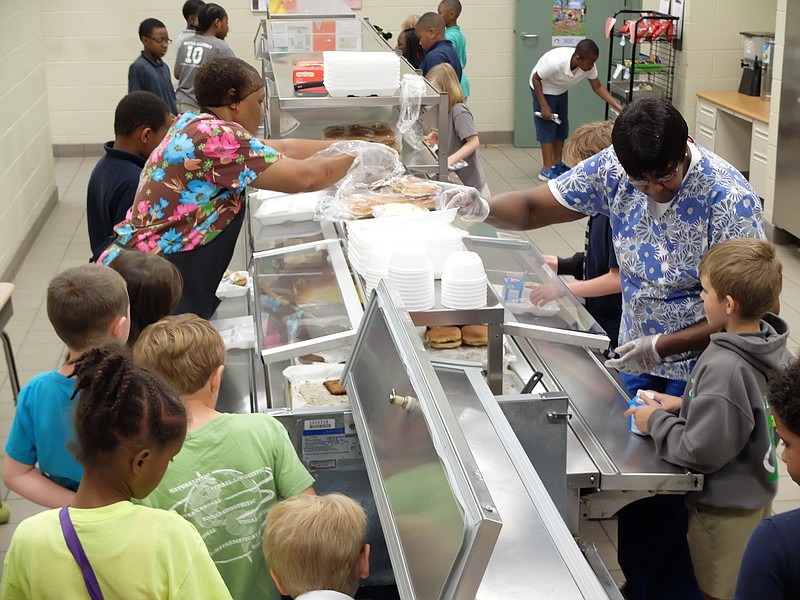Schools likely to be affected this upcoming year:
District 1:Allen ElementaryNorth Hamilton County Elementary SchoolSequoyah High SchoolSoddy Daisy Middle SchoolDistrict 3:Hixson High SchoolDistrict 6:Lookout Valley Middle/HighDistrict 9:Snow Hill ElementarySource: The Hamilton County Department of Education
Seven schools in Hamilton County may no longer be able to offer students free breakfast and lunch because of the school system's requirement to recalculate its Community Eligibility Provision.
The Hamilton County Board of Education discussed the proposed changes Thursday night, and it will officially vote to accept them next week.
The Community Eligibility Provision is a federal program that's allowed the school system to provide free meals for three years to all students at more than half of the district's schools.
"There is no telling how many more kids we have fed with CEP, kids that probably wouldn't have eaten otherwise," said Lee McDade, assistant superintendent of administrative services for Hamilton County schools.
In order to qualify for CEP, a school or group of schools within a district must have at least 40 percent of its students be eligible for free meals by direct certification, which means their family receives certain government assistance.
Hamilton County originally chose to treat the entire district as a group, allowing it to offer free meals to more students than if individual schools applied for the grant. But, due to new federal guidance released in December, the school system had to recalculate which schools could receive the grant this upcoming school year because Falling Water Elementary, which was a CEP school, closed.
McDade also warned the board about pending legislation that could increase the cut-off for CEP eligibility to 60 percent, which would again reduce the number of schools in the county that can provide free meals.
Regardless of schools being removed from eligibility this year or from future legislation, students qualifying for free and reduced-price lunch will continue receiving meals, but the school will have to return to the traditional model of using meal applicants from individual households to determine free lunch eligibility, according to Carolyn Childs, director of school nutrition for the Hamilton County Department of Education.
School board member Greg Martin said he's not a fan of the program, saying students who come from well-off families shouldn't receive a meal on the government's dime.
"I just don't think that is a good use of tax dollars," Martin said. "We are still taking care of the poor, with or without this program."
A majority of the schools not able to serve free meals this upcoming school year are in District 1, the north part of the county.
School board member Rhonda Thurman, who represents the district, said this problem is exactly why she opposed the school system accepting the grant in the first place.
She said families have grown accustomed to having their children's meals paid for, and this is really going to affect families in the district who are struggling to make ends meet.
"Now you're taking it away from them, and I'd say most of the schools in my district are affected," Thurman said. "I just hate that we start these kinds of things and then they are cut out."
McDade said he couldn't agree more, but reminded the board about how many additional students have been fed through the grant, and the needed equipment it's allowed Childs to purchase.
Childs said a half-million extra meals have been given to students since the program began.
Childs previously told the Times Free Press that when schools have to be selective in who they offer free meals to, it impacts schools in negative ways. She said it creates stigmas and that many kids show up to school hungry and are now not able to eat.
"Children can't learn if they're hungry," she said.

